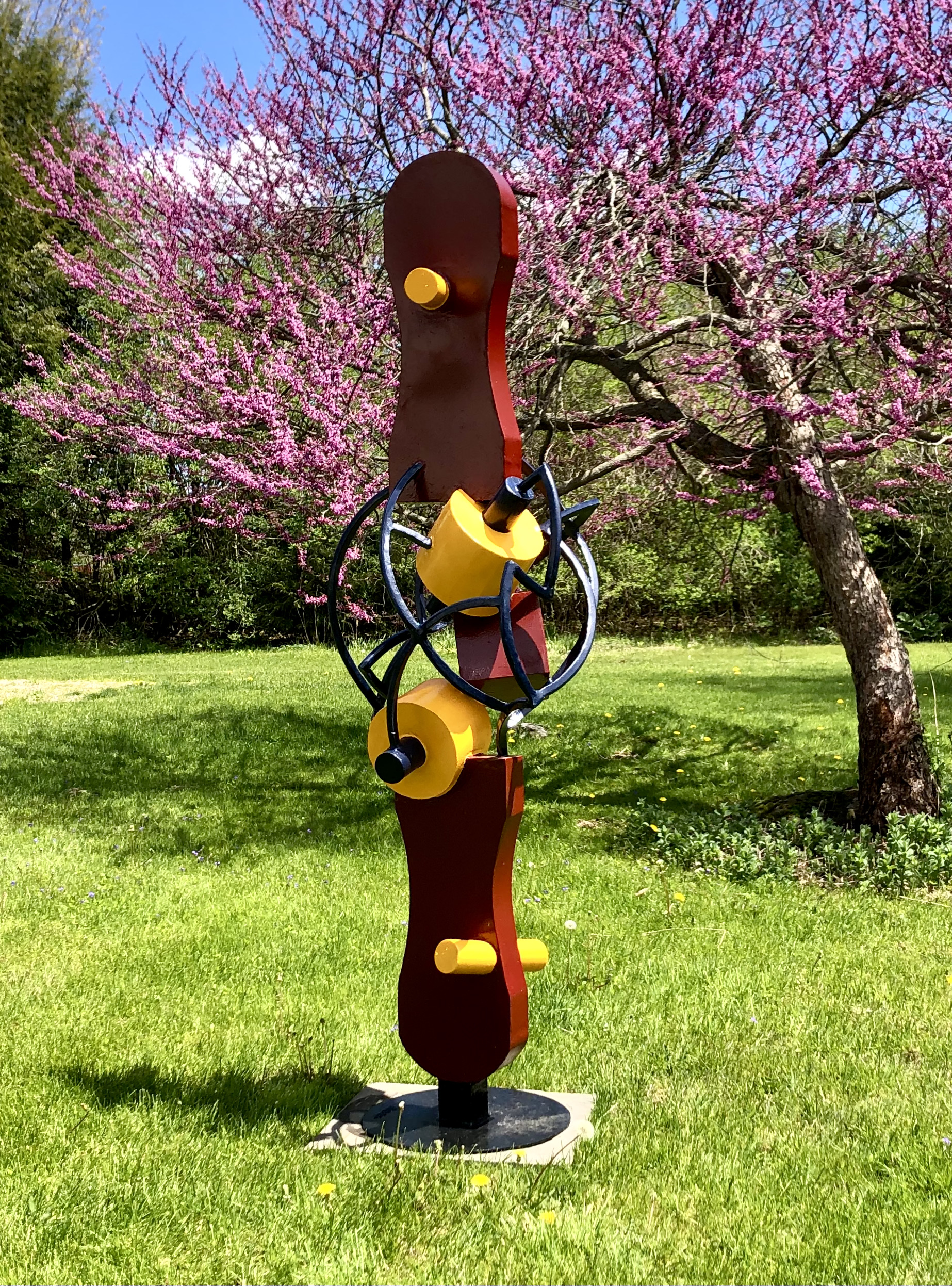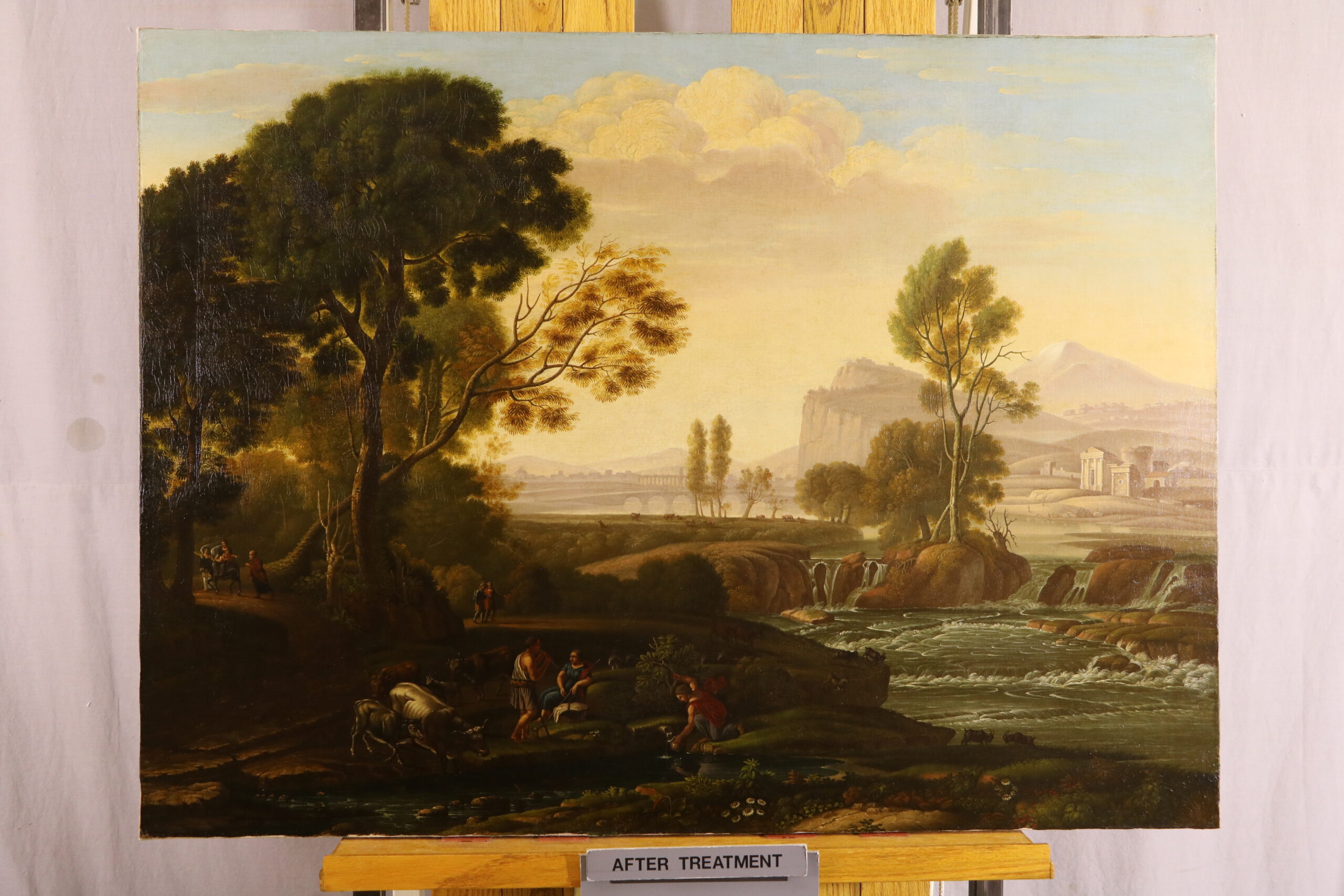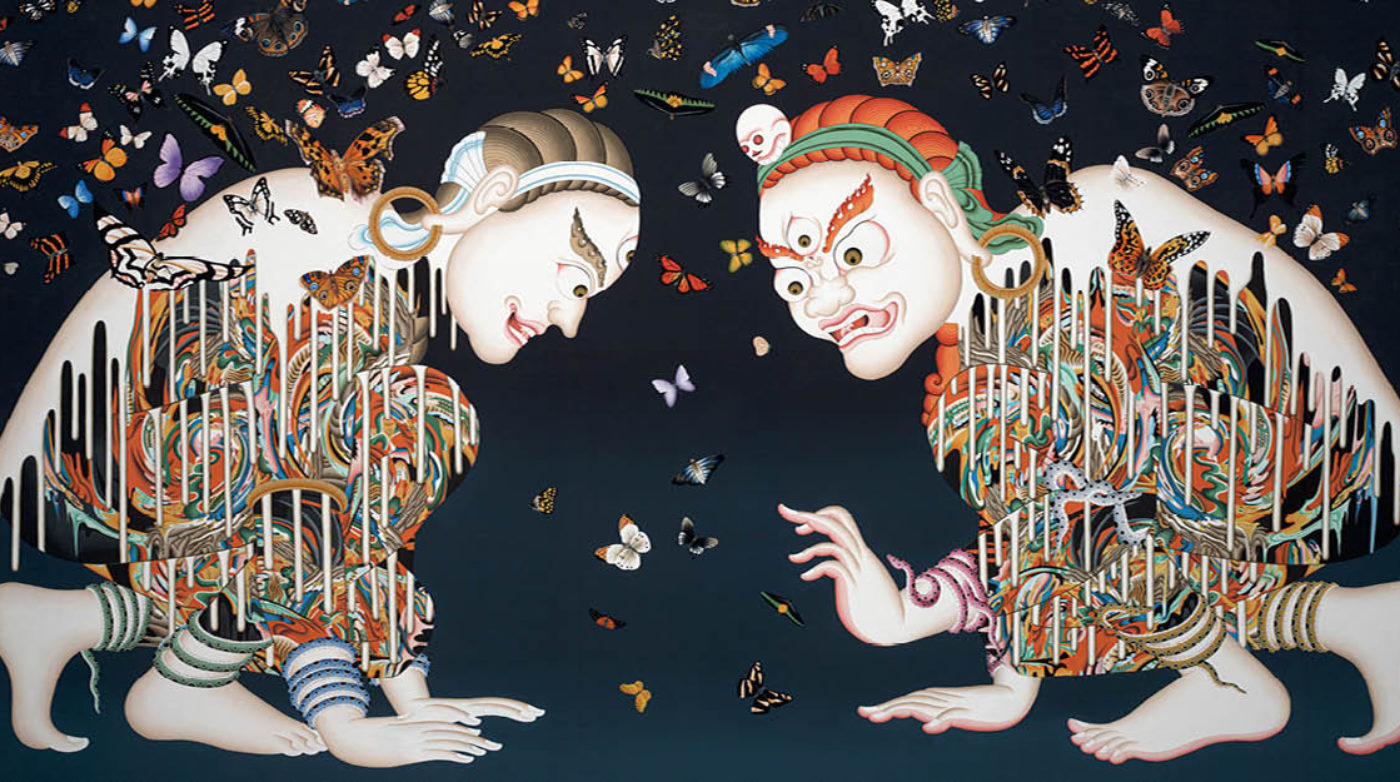

Spirits: Tsherin Sherpa with Robert Beer
On view February 4 to May 29, 2023
The Peabody Essex Museum (PEM) presents Spirits: Tsherin Sherpa with Robert Beer, an exhibition that explores the forces of tradition and innovation through the work of two leading figures in Himalayan art. Nepalese-born Tibetan American artist Tsherin Sherpa creates captivating paintings and sculptures that stretch, bend, reconfigure and repurpose traditional Buddhist iconography in order to address contemporary concerns. The line drawings of Robert Beer – lauded as the first Westerner to study Tibetan Buddhist thangka painting and one of the tradition’s greatest and most respected masters – reveal the strict forms, symbols and motifs from which Sherpa draws inspiration. Together, these works create a layered and unexpected dialogue between a Himalayan artist who depicts Buddhist deities transformed by the modern world and a Welshman who is committed to preserving traditional Buddhist symbols and motifs. On view from February 4 through May 29, 2023, Spirits: Tsherin Sherpa with Robert Beer is organized by the Virginia Museum of Fine Arts, in partnership with the Peabody Essex Museum and with support from Dr. Siddhartha V. Shah.
“Spirits encourages us to consider how, in a globally-connected world, cultures entwine, meld and morph to create hybrid, fluid forms of identity that themselves spawn new forms of creative expression,” says Lan Morgan, PEM’s assistant curator and coordinating curator for the exhibition. “Through these two artists’ life experiences and creative output, we can explore the tension between upholding time-honored cultural traditions and launching new personal journeys that embrace an ever-evolving and unknown future.”
The exhibition is the first major Himalayan art project at PEM in three decades. It opens with Sherpa’s sculpture Skippers (Bubblegum), featuring a deity in gold briefs defiantly blowing a bubble of pink chewing gum. In the 33 paintings and 3 sculptures on view at PEM, Sherpa takes the traditional grid system, forms, ornaments and facial expressions of Tibetan Buddhist art and melds them with his own experience of living in America and the West.
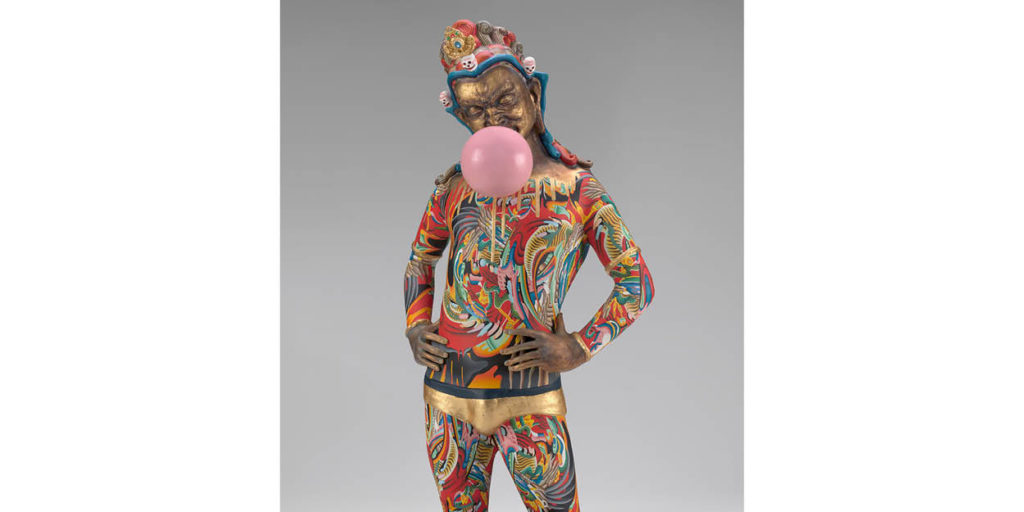

When Sherpa moved to the U.S. in 1998, he wrestled with cultural dispossession and a loss of identity. The exhibition creates a framework for Sherpa’s experiences of loss, struggle, victory, wisdom and ultimately, empowerment and reflection. The section called “What Is My Power?” features Victory to the Spirit (Kyi Kyi so so Lha Gyal lo), a painting commissioned by the Victoria and Albert Museum in 2014 that marks a pivotal point in Sherpa’s career. Its Tibetan title is a traditional invocation declared when reaching a mountain’s summit, as the artist metaphorically did with his acceptance into an A‐list museum’s collection. All the works in this space — a small bronze of the same figure, a set of paintings evoking prayer flags at mountain summits, a figure that conflates the Buddhist goddess Tara with Lady Gaga — unmistakably communicate triumph after a long struggle.
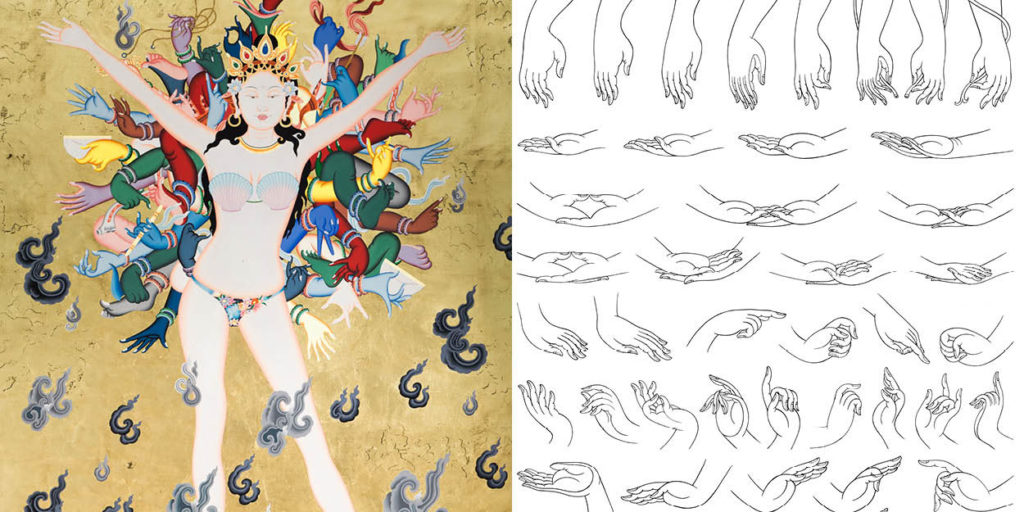

In 1968, Beer, a self-taught artist from Wales, experienced a major mental and emotional crisis that would last several years. In search of spiritual meaning, he left for India and Nepal, where he immersed himself in the study of Tibetan Buddhist thangka painting with several of the greatest practitioners living at the time. Beer spent the next 40 years producing hundreds of line drawings of Indo-Tibetan deities and symbols with a devotion that bordered on obsession. His 1999 book The Encyclopedia of Tibetan Symbols and Motifs remains an authoritative publication and a staple in tattoo studios around the world. The exhibition at PEM features nearly 20 line drawings by Beer that celebrate the mathematical scope and rigid rule set of traditional Buddhist art from Nepal. “Beer’s experience as a Westerner voyaging to the Himalayas to inspire his artistic practice and expand his worldview provides a meaningful counterpoint to Sherpa’s biography, and reminds us of our complex and layered identities as well as our capacity for transformation,” adds Morgan.
When an earthquake struck Nepal in 2015, Sherpa returned to his homeland to survey the devastation and aid the region’s recovery. This exhibition invites visitors to participate in a unique installation inspired by his experience. Wish‐Fulfilling Tree, which Sherpa considers a therapeutic work, is a large tree-shaped offering mandala that emerges from a field of rubble. The base of the sculpture was originally filled with hundreds of Nepalese currency notes signed by survivors of the devastating earthquake, emblematic of their hope for financial recovery and transcendence of disaster. The installation’s composition changes to reflect the local community and context of each new showing. At PEM, the sculpture rises from locally sourced rubble. Visitors may write their own private wishes and hopes on pieces of paper that will be inserted into the mandala’s seven layers throughout the run of the exhibition.
Publication
Spirits is accompanied by an illustrated catalog published by the Virginia Museum of Fine Arts and written by Dr. John Henry Rice, the exhibition curator and VMFA’s E. Rhodes and Leona B. Carpenter Curator of South Asian and Islamic Art. This 162-page work features additional essays from Tsherin Sherpa and scholars of traditional and contemporary art, including Jeffrey S. Durham, H.G. Masters and Sophia L. Pandé. It explores the trajectory of Sherpa’s career, his artistic practice and the compelling themes (loss, struggle, victory, wisdom and empowerment) that structure the VMFA’s presentation of the exhibition. The catalog includes full-color illustrations of the works on view, as well as personal photographs from the artist’s life in Nepal and the United States. Tsherin Sherpa: Spirits is available at the PEM Shop.
What is Creative Collective?
Creative Collective is a group of economic development strategists, small business supporters, activation specialists, and believers in the importance of the creative workforce. We foster growth, sustainability, and scalability for small businesses, creative thinkers, organizations, entrepreneurs, and innovators. Learn more and join Creative Collective at www.creativecollectivema.com/join




